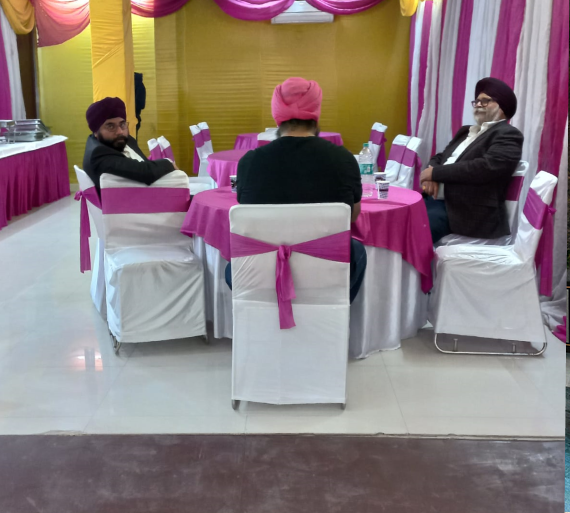
This 42 meter high "Arc-de-Triomphe" like archway situated in the heart of Delhi city is much taller in the hearts of India. Formerly known as All India War Memorial, India Gate was built to commemorate the death of 70,000 British Indian soldiers who died during First World War between 1914-21. Even though the India Gate was constructed as a war memorial, the architectural style of the monument makes it appear like an epitome of triumph. Much similar to Arch of Constantine, outside the Colosseum in Rome, India gate was designed by Sir Edward Lutyens.

Red Fort, popularly known as Lal Quila, is the pride of the nation. It is a historic fort, situated in the older part of the city. Lal Quila served as the primary residence for Mughal Emperors who ruled the city, for about 200 years. It was until 1856 that the Mughals had resided in Lal Quila. Besides, the historical monument also served as the political center of the Mughals. Red Fort was built under the reign of Mughal emperor Shah Jahan in the year 1639. It was made on the lines of Shah Jahan's palace in his fortified capital Shahanabad. It was called Red Fort because of its massive closed walls built in red stone. The palace not only showcases the architectural brilliance of Shah Jahan but also gives a reasonably good picture of Islamic architecture of those times.

Chandni Chowk or “Moonlight Square” is one of the memorable gifts of the Mughal Era that Delhi cherishes till date. Being one of the oldest and busiest markets of the country, Chandni Chowk is a center of attraction for traders as well, besides the tourists who come to visit the city. Chandni Chowk was designed and built by Mughal Emperor Shah Jahan’s favorite daughter Jahan Ara Begum in 1650 CE. The marketplace was 40 yards wide and 1520 yards long.

The tomb of Mughal Emperor Humayun, called Humayun’s Tomb, was built in Delhi in 1569-70. The construction of Humayun’s Tomb was commissioned by his first wife and chief consort Empress Bega Begum.It was designed by Mirak Mirza Ghiyas and his son, Sayyid Muhammad along with some Persian architects, who were chosen by the Begum. Located in Nizamuddin East, Humayun’s Tomb is the first garden tomb of Indian sub-continent. It was declared UNESCO World Heritage SIte in 1993.

Connaught Place is one of the largest commercial and financial centers of the country and the world. Popularly known as CP, the place houses the headquarters of some of the biggest Corporates. Besides, it is a fashion destination too. Some of the biggest brands in the world have their showrooms in Connaught Place.It is worth mentioning here that Connaught Place is one of the most expensive real estate in the world. CP was termed as the showpiece of Lutyens’ Delhi.

Qutab Minar, Qutb Minar or Qutub Mina spell it as it suits you. Spelling could defer from historian to historian, but the charm of the building remained the same throughout the history. This 73-meter tall minaret has five stories. Interestingly, the base diameter of the structure is 14.3 meters, while it slims down to 2.7 meters as it approaches the top. Qutub Minar draws inspiration from Minaret of jam, built in Afghanistan. It is believed that Qutab Ud-din Aibak, the founder of Delhi Sultanate, started building the minaret around 1192. He is credited to have built the first floor of the five-storeyed minaret.

Lotus Temple is one of the most prominent attractions of Delhi. Known for its Lotus flower-like shape, the place is a Baha’i House of Worship. Opened for the public in December 1986, construction of The Lotus Temple cost around $10 million. The temple is not just known for its scenic value. It is the serenity and calm of Lotus Temple that attracts people from across the globe. The best part of this temple is that people from any religion, caste or creed can visit it, without any inhibition or boundation.

Amidst the glitz and glamour of Delhi city, stands an old yet attractive monument called Purana Quila or Old Fort. Purana Quila is spread in the area of almost two kilometers and is rectangular. History states that the monument was built under the reign of Humayun and Afghan Sher Shah Suri. The fort is made up of walls that rise to 18 meters and has three arched gateways. The Bada Darwaza (Big gate) faces west and is used till date.

Swaminarayan Akshardham Temple, also known as Akshardham, is one of the most important social, religious and cultural places of Delhi. BAPS has constructed the temple. It is inspired by Yogiji Maharaj and is created by Pramukh Swami Maharaj. Officially opened on 6th November 2005, by Dr. A P J Abdul Kalam, the Akshardham Temple attracts at least 70 percent of the tourists coming to the city. Akshardham Temple, Delhi, is the successor of Akshardham Temple, Gandhinagar, Gujarat and is built according to Vastu Shastra and Panchatantra Shastra.

Amidst the fascinating youth junction of Delhi city, Hauz Khas, is an old time charmer called Hauz Khas Complex. Situated in the southern part of the city, Hauz Khas complex comprises of a few exciting elements including a water tank, a tomb, a mosque, Islamic seminary and some pavilions. The Hauz Khas Complex gives a fair sense of 13th century Delhi Sultanate reign. Although Hauz Khas adds to the list of some of the most excellent commercial and residential places of the city, the Hauz Khas Complex holds the old world charm.

